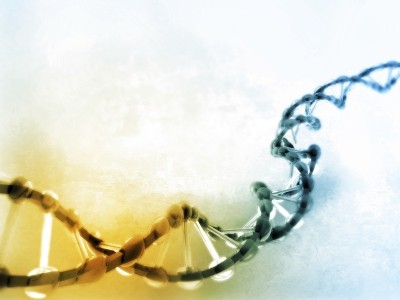Nano-flares light the way for in-cell mRNA detection
can be used as cellular 'nano-flares' that enable the visualisation
and quantification of RNA in living cells.
Probes that enable the visualisation and detection of intracellular RNA have become important tools to measure and quantify how a cell responds to external stimuli such as exposure to drugs or toxins. However, many of the probes are difficult to transfect and can be unstable in cellular environments, often leading to high background signals and a diminished ability to detect targets. Researchers from Northwestern University, US, led by Professor Chad Mirkin, have published details in an early access article in the Journal of the American Chemical Society of how oligonucleotide-modified gold nanoparticle probes can be hybridised to fluorophore components to enable RNA quantification in living cells. "In addition to their use in the context of siRNA knockdown experiments, nano-flares will also be of utility in other areas such as cell sorting, gene profiling and real-time drug validation studies," write the authors. "Given the ability of these materials to also act as gene regulation agents, these probes may be easily adapted to simultaneously transfect, control and visualise gene expression in real time." The system takes advantage of the efficient cellular uptake of oligonucleotide-modified nanoparticle conjugates without the use of transfection agents. In addition, the nanoparticles were shown to be very resistant to enzymatic breakdown enabling the nano-flares to work as effective intracellular probes. The probes consist of 13 nm gold nanoparticles, functionalised with an 18-base recognition element to a specific RNA transcript via a gold thiol bond. Fluorophores attached to a complimentary sequence are then hybridised to the oligo-probes. The nano-flares take advantage of the highly efficient fluorescence quenching properties of the gold nanoparticles such that the fluorophores only emit light after they have been displaced from the nanoparticle by the target RNA sequence. The researchers tested the ability of the nano-flares to detect the survivin transcript - a target that has received significant attention due to its potential as a cancer therapeutic and diagnostic target. Human breast cancer SKBR3 cells which express a high number of survivin transcripts were incubated with survivin-targeting nano-flares and exhibited high fluorescence compared to a control sample of cells incubated with nano-flares featuring non-complimentary targets. The imaging results were consistent with reverse transcriptase PCR (polymerase chain reaction) measurements and flow cytometry experiments showed uniform cellular internalisation of the probes. The researchers then used the nano-flares to study changes in intracellular amounts of RNA during siRNA knockdown of the survivin RNA transcripts in the SKBR3 cell models. A siRNA concentration-dependant shift in the fluorescence intensity of the cell population was observed, in agreement with the number of survivin transcripts as measured by PCR. The group has already received two US patents (6,861,221 and 6,878,814 ) covering "nanoparticles having oligonucleotides attached thereto and uses therefore".











